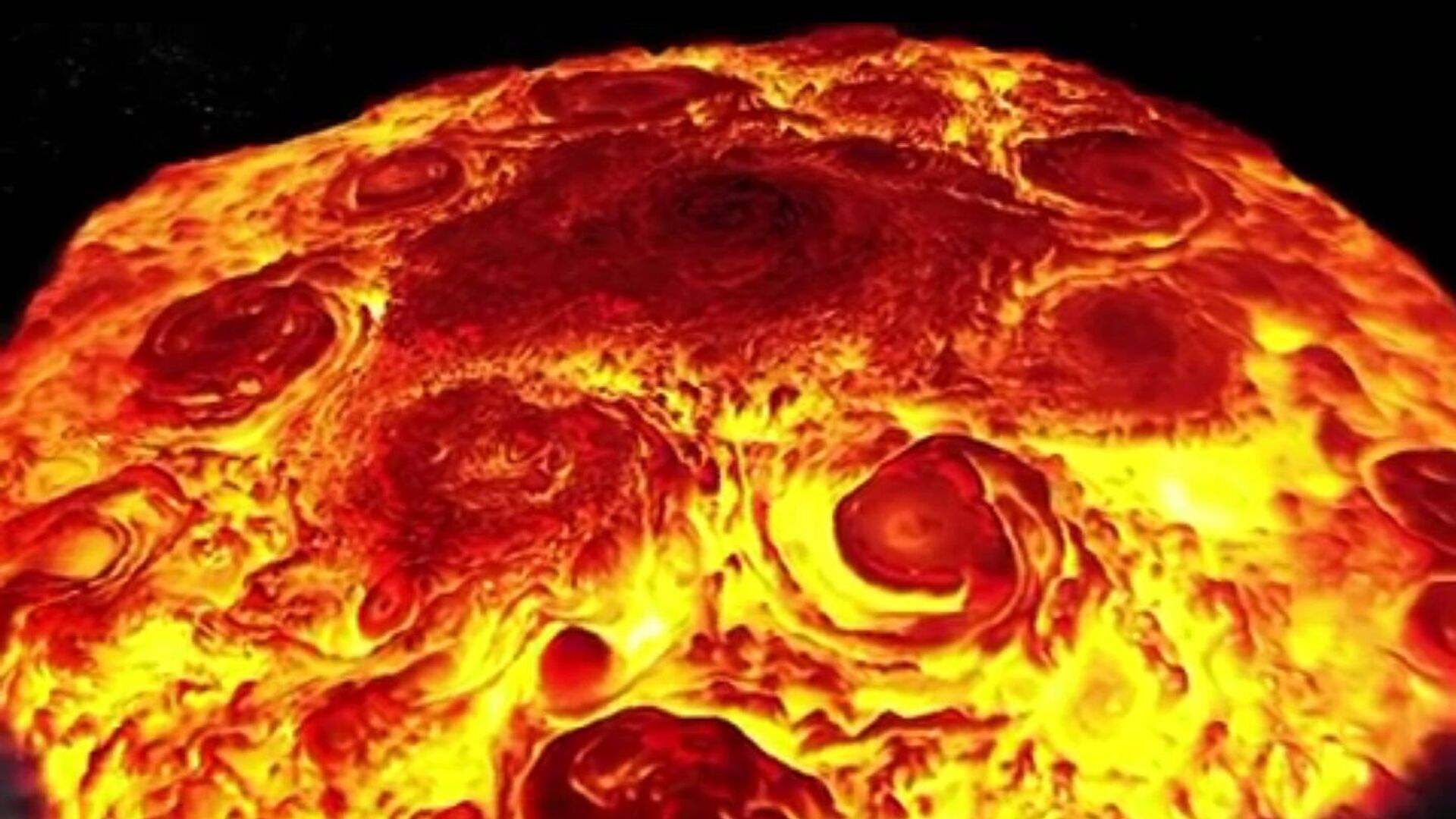https://sputnikglobe.com/20220214/how-about-interplanetary-pizza-day-nasa-releases-video-of-pepperoni-like-storm-on-jupiter-1093027987.html
How About Interplanetary Pizza Day? NASA Releases Video of Pepperoni-Like Storm on Jupiter
How About Interplanetary Pizza Day? NASA Releases Video of Pepperoni-Like Storm on Jupiter
Sputnik International
The US space agency hopes that findings from the Juno probe to Jupiter will help scientists shed more light on how the solar system formed aeons ago. 14.02.2022, Sputnik International
2022-02-14T16:22+0000
2022-02-14T16:22+0000
2022-10-19T19:41+0000
nasa
jupiter
juno
mission
storm
us
video
https://cdn1.img.sputnikglobe.com/img/07e6/02/0e/1093026169_0:22:1439:831_1920x0_80_0_0_0c098eafee8dc8ca86e57aaeb5ffcff6.jpg
NASA has posted a video of a pepperoni-like Jupiter storm on its Instagram account to highlight the phenomenon's actual appearance in a publication that coincided with the US’ National Pizza Day.In the 14-second clip, Jupiter's newest massive storm, which resembles a pepperoni pizza, is seen as it slowly approaches the camera.NASA explained that the video, which shows an infrared view of Jupiter’s north pole, “utilises imagery derived from data collected by the Jovian Infrared Auroral Mapper (JIRAM) instrument aboard the US space agency’s SolarSystem mission Juno".According to the space agency, the infrared image of Jupiter’s north pole was obtained during Juno’s fourth pass over the solar system’s largest planet on 2 February 2017. Juno entered an elongated orbit of Jupiter’s atmosphere in 2016, and scientists believe that the mission’s finding will add to resolving the mystery of the solar system’s formation.
Sputnik International
feedback@sputniknews.com
+74956456601
MIA „Rossiya Segodnya“
2022
Oleg Burunov
https://cdn1.img.sputnikglobe.com/img/07e4/09/0b/1080424846_0:0:2048:2048_100x100_80_0_0_3d7b461f8a98586fa3fe739930816aea.jpg
Oleg Burunov
https://cdn1.img.sputnikglobe.com/img/07e4/09/0b/1080424846_0:0:2048:2048_100x100_80_0_0_3d7b461f8a98586fa3fe739930816aea.jpg
News
en_EN
Sputnik International
feedback@sputniknews.com
+74956456601
MIA „Rossiya Segodnya“
Sputnik International
feedback@sputniknews.com
+74956456601
MIA „Rossiya Segodnya“
Oleg Burunov
https://cdn1.img.sputnikglobe.com/img/07e4/09/0b/1080424846_0:0:2048:2048_100x100_80_0_0_3d7b461f8a98586fa3fe739930816aea.jpg
nasa, jupiter, juno, mission, storm, us, video
nasa, jupiter, juno, mission, storm, us, video
How About Interplanetary Pizza Day? NASA Releases Video of Pepperoni-Like Storm on Jupiter
16:22 GMT 14.02.2022 (Updated: 19:41 GMT 19.10.2022) The US space agency hopes that findings from the Juno probe to Jupiter will help scientists shed more light on how the solar system formed aeons ago.
NASA has posted a video of a pepperoni-like Jupiter storm on
its Instagram account to highlight the phenomenon's actual appearance in a publication that coincided with the US’ National Pizza Day.
“How about Interplanetary Pizza Day? Our Juno mission saw ‘pepperoni’ storms topping Jupiter", the US space agency wrote in its Instagram post.
In the 14-second clip, Jupiter's newest massive storm, which resembles a pepperoni pizza, is seen as it slowly approaches the camera.
NASA explained that the video, which shows an infrared view of Jupiter’s north pole, “utilises imagery derived from data collected by the Jovian Infrared Auroral Mapper (JIRAM) instrument aboard the US space agency’s SolarSystem mission Juno".
“The yellow areas are warmer (or deeper into Jupiter’s atmosphere) and the dark areas are colder (or higher up in Jupiter’s atmosphere). In this clip, the highest 'brightness temperature' is around 260K (about -13°C) and the lowest is around 190K (about -83°C). The ‘brightness temperature’ is a measurement of the radiance, at 5 µm, traveling upward from the top of the atmosphere towards Juno, expressed in units of temperature”, NASA added.
According to the space agency, the infrared image of Jupiter’s north pole was obtained during Juno’s fourth pass over the solar system’s largest planet on 2 February 2017. Juno entered an elongated orbit of
Jupiter’s atmosphere in 2016, and scientists believe that the mission’s finding will add to resolving the mystery of the solar system’s formation.




